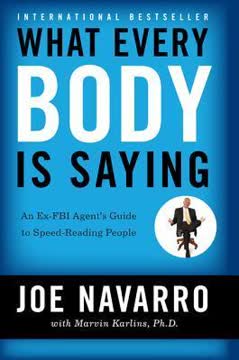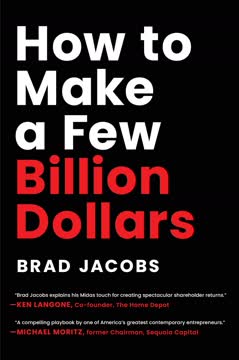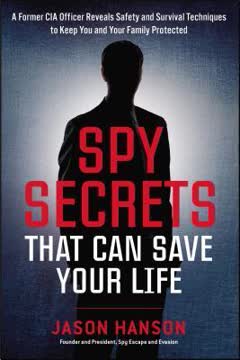Key Takeaways
1. Deception detection is a skill that can be learned and applied in everyday life
Welcome to your new world.
Everyone encounters deception. From personal relationships to professional settings, people frequently encounter situations where they need to determine if someone is being truthful. The ability to detect deception is not an innate talent reserved for spies or law enforcement officials, but a skill that can be developed and applied by anyone.
Practical applications abound. This skill can be useful in various scenarios:
- Evaluating the truthfulness of a job candidate's claims
- Assessing the honesty of a child's explanations for misbehavior
- Determining if a spouse is being faithful
- Analyzing the credibility of public figures' statements
By learning and practicing deception detection techniques, individuals can make more informed decisions and protect themselves from potential harm or manipulation in their daily lives.
2. The "Spy the Lie" methodology focuses on timing and clusters of deceptive behaviors
If we can identify the first deceptive behavior within that first five seconds, we can reasonably conclude that the behavior is directly associated with the stimulus.
Timing is crucial. The methodology emphasizes observing behaviors that occur within the first five seconds after a question is asked. This immediate response window is when deceptive behaviors are most likely to be directly related to the question at hand.
Clusters indicate deception. A single deceptive behavior is not enough to conclude someone is lying. Instead, the methodology looks for clusters of two or more deceptive indicators occurring together. This approach reduces the likelihood of misinterpreting innocent behaviors as signs of deception.
Key aspects of the methodology:
- Focus on the first five seconds after a question
- Look for clusters of two or more deceptive behaviors
- Ignore truthful behaviors to avoid confusion
- Simultaneously observe both verbal and nonverbal cues (L-squared mode)
3. Verbal deception indicators include failure to answer, denial problems, and convincing statements
If the facts are not their ally, people have to say something that convinces you, and the best thing they can say is something that's true or irrefutable.
Evasive responses raise red flags. When someone fails to directly answer a question or provides an incomplete or irrelevant response, it may indicate deception. This can include:
- Repeating the question
- Answering a different question than the one asked
- Providing overly specific or vague answers
Denial issues suggest dishonesty. Problems with denials can manifest in several ways:
- Failure to explicitly deny wrongdoing
- Offering non-specific denials (e.g., "I would never do something like that")
- Burying a denial within a long-winded response
Convincing statements deflect attention. Instead of providing factual information, deceptive individuals often resort to statements designed to convince the questioner of their character or trustworthiness. Examples include:
- "I'm an honest person"
- "I have a great reputation"
- "I would never jeopardize my job by doing that"
4. Nonverbal deception indicators include grooming gestures, anchor point movements, and hiding mouth or eyes
If a person clears his throat or performs a significant swallow prior to answering the question, that's a potential problem.
Body language reveals discomfort. Nonverbal cues can provide valuable insights into a person's truthfulness. Key indicators to watch for include:
- Grooming gestures (adjusting clothes, hair, or surroundings)
- Anchor point movements (shifting feet, fidgeting in chair)
- Hiding mouth or eyes with hands
- Throat-clearing or swallowing before answering
- Hand-to-face activity (touching nose, ears, or mouth)
Physiological responses betray anxiety. Many of these behaviors are rooted in the body's autonomic nervous system response to stress or anxiety. When faced with the prospect of lying, individuals may unconsciously exhibit these physical signs of discomfort.
It's important to note that these behaviors should be observed in clusters and in context, as single instances may not necessarily indicate deception.
5. Effective questioning techniques are crucial for uncovering deception
The model is only as good as the questions you ask in the course of employing it.
Strategic questioning uncovers truth. The way questions are formulated and delivered can significantly impact the effectiveness of deception detection. Key questioning techniques include:
- Presumptive questions: Assume information to elicit a response (e.g., "What happened at Nicole's last night?")
- Bait questions: Present hypothetical scenarios to trigger a "mind virus" (e.g., "Is there any reason someone might say they saw you there?")
- Catch-all questions: Uncover lies of omission (e.g., "What haven't I asked that you think I should know?")
Avoid common pitfalls. To maximize the effectiveness of questioning:
- Keep questions short and simple
- Avoid compound or vague questions
- Don't use negative questions that allow easy denials
- Be prepared with follow-up questions to clarify responses
By mastering these questioning techniques, interviewers can create an environment that encourages truthful responses and makes deception more difficult to maintain.
6. Managing your own biases is essential for accurate deception detection
We often have certain expectations, so that, for example, we might look at a person whom we consider to be sophisticated and smart, and presume that there's no way such a person would exhibit blatantly deceptive behavior.
Recognize personal biases. Everyone has inherent biases that can affect their judgment. Common biases in deception detection include:
- Believing that certain types of people (e.g., professionals, authority figures) are less likely to lie
- Assuming that nervous behavior always indicates deception
- Overrelying on stereotypical "liar" behaviors (e.g., lack of eye contact)
Strategies for bias management:
- Acknowledge your biases and actively work to counteract them
- Focus on observable behaviors rather than preconceived notions
- Use the cluster approach to avoid overinterpreting single behaviors
- Maintain a neutral demeanor during questioning to avoid influencing responses
- Regularly reassess your assumptions and conclusions
By actively managing biases, deception detectors can improve their accuracy and avoid common pitfalls that lead to misinterpretation of behaviors.
7. The model is a tool for identifying potential deception, not absolute proof of lying
Remember, you're not a human lie detector.
Indicators, not smoking guns. The deception detection model provides valuable insights into potential dishonesty, but it does not offer definitive proof of lying. It's crucial to understand the limitations of the methodology:
- Deceptive behaviors may have innocent explanations
- Truthful people can sometimes exhibit deceptive indicators due to stress or other factors
- Cultural differences can affect the interpretation of certain behaviors
Further investigation is key. When deceptive indicators are observed:
- Consider it a red flag for potential dishonesty
- Use it as a basis for asking more probing questions
- Seek additional evidence or corroboration
- Avoid jumping to conclusions without thorough examination
The model should be viewed as a tool for identifying areas that warrant further scrutiny, rather than a definitive means of determining truth or falsehood.
8. Deception detection skills can be applied in various personal and professional situations
Certainly, unintended messages are just as commonly conveyed in everyday situations that are far removed from criminal wrongdoing.
Versatile applications. The skills and techniques of deception detection can be valuable in numerous contexts:
Personal:
- Parenting (e.g., addressing concerns about drug use or misbehavior)
- Relationships (e.g., assessing fidelity or honesty in communication)
- Consumer interactions (e.g., evaluating sales pitches or service claims)
Professional:
- Human resources (e.g., conducting job interviews or internal investigations)
- Law enforcement and security (e.g., interrogations and threat assessments)
- Business negotiations (e.g., evaluating potential partners or deals)
- Healthcare (e.g., assessing patient compliance or symptom reporting)
Ethical considerations. While these skills can be powerful, it's important to use them responsibly:
- Respect privacy and boundaries in personal relationships
- Adhere to legal and ethical guidelines in professional settings
- Use the techniques as a starting point for open communication, not as a weapon
- Recognize that the goal is to uncover truth, not to catch people in lies
By applying deception detection skills thoughtfully and ethically, individuals can improve their decision-making and protect themselves and others from potential harm or manipulation in various aspects of life.
Last updated:
FAQ
What's "Spy the Lie" about?
- Detecting Deception: "Spy the Lie" is a guide on how to detect deception, written by former CIA officers. It provides insights into identifying lies through verbal and nonverbal cues.
- Methodology: The book introduces a specific methodology developed within the CIA, which is now used by intelligence and law enforcement communities to detect deception.
- Practical Applications: It offers practical advice for everyday situations, such as interviews, negotiations, and personal interactions, where detecting deception can be beneficial.
Why should I read "Spy the Lie"?
- Expert Insights: The authors are former CIA officers with extensive experience in deception detection, providing credible and authoritative insights.
- Practical Techniques: The book offers practical techniques that can be applied in various personal and professional scenarios to identify deception.
- Improved Communication: Understanding deception can enhance your communication skills and help you make better-informed decisions.
What are the key takeaways of "Spy the Lie"?
- Focus on Clusters: Look for clusters of deceptive behaviors rather than isolated incidents to increase the likelihood of detecting deception.
- Ignore Truthful Behavior: To find deception, ignore truthful behavior that doesn't address the issue at hand, as it can be used to mislead.
- Use of Questions: The book emphasizes the importance of asking the right questions, such as presumptive and bait questions, to elicit truthful responses.
What is the deception-detection methodology in "Spy the Lie"?
- Strategic Principle: The methodology is based on ignoring truthful behavior to focus on detecting deception.
- Guidelines: It includes two main guidelines: timing (looking for deceptive behavior within five seconds of a stimulus) and clusters (identifying two or more deceptive indicators).
- Application: The methodology is applied through a systematic approach to analyzing verbal and nonverbal behaviors in response to questions.
How do the authors suggest managing deception?
- Avoid Entrenchment: Avoid asking negative questions that allow the person to entrench themselves in their lie.
- Use Prologues: Introduce key questions with prologues to prime the information pump and encourage openness.
- Overcome Alibis: Use strategies like bait questions and the possibility strategy to overcome psychological alibis and selective memory.
What are some key quotes from "Spy the Lie" and what do they mean?
- "No mask like open truth to cover lies." This quote emphasizes that sometimes the best way to hide a lie is to present it as an open truth, making it harder to detect.
- "People do not believe lies because they have to, but because they want to." This highlights the human tendency to believe what aligns with their desires or biases, even if it's a lie.
- "Truth fears no questions." This suggests that truth can withstand scrutiny and questioning, whereas lies often crumble under pressure.
What are the common deceptive behaviors identified in "Spy the Lie"?
- Failure to Answer: When a person doesn't directly answer a question, it can indicate deception.
- Convincing Statements: Statements made to convince rather than convey factual information are often deceptive.
- Nonverbal Cues: Behaviors like hiding the mouth or eyes, throat-clearing, and anchor-point movements can signal deception.
How does "Spy the Lie" suggest using questions to detect deception?
- Presumptive Questions: These questions presume something about the situation, prompting the person to reveal more information.
- Bait Questions: Hypothetical questions that create a "mind virus," causing the person to consider the implications of their actions.
- Catch-All Questions: Used to uncover lies of omission and ensure no important information is overlooked.
What role do biases play in deception detection according to "Spy the Lie"?
- Managing Biases: The book emphasizes the importance of managing personal biases to avoid being misled by deceptive behavior.
- Bias Influence: Biases can affect judgment and lead to incorrect conclusions about a person's truthfulness.
- Objective Assessment: A systematic approach helps mitigate the impact of biases on deception detection.
How does "Spy the Lie" address the use of nonverbal cues in detecting deception?
- Nonverbal Dominance: Nonverbal communication makes up a significant portion of human interaction, making it crucial in detecting deception.
- Specific Cues: The book identifies specific nonverbal behaviors, such as hand-to-face activity and grooming gestures, as potential indicators of deception.
- Avoiding Global Assessment: It advises against relying on global assessments of body language, focusing instead on specific cues in response to questions.
What are the limitations of deception detection as discussed in "Spy the Lie"?
- No Human Lie Detector: The book acknowledges that no one can detect lies with absolute certainty, emphasizing the need for a systematic approach.
- Behavioral Myths: It warns against relying on common myths, such as poor eye contact, as definitive signs of deception.
- Complexity of Communication: The book highlights the complexities of communication and the challenges they pose in accurately detecting deception.
How can "Spy the Lie" be applied in everyday life?
- Personal Relationships: Use the techniques to improve communication and trust in personal relationships by identifying potential deception.
- Professional Settings: Apply the methodology in interviews, negotiations, and other professional interactions to make better-informed decisions.
- Enhanced Awareness: The book helps develop a heightened awareness of verbal and nonverbal cues, improving overall communication skills.
Review Summary
Spy the Lie receives mixed reviews. Many readers find it insightful, offering practical techniques for detecting deception through behavioral analysis. The book is praised for its clear explanations and real-world examples. Some appreciate its application beyond law enforcement, finding it useful in everyday situations. However, critics argue that the content is common knowledge, overly simplistic, or lacks scientific backing. The writing style and anecdotes receive both praise and criticism. Overall, readers value the book's approach to understanding human behavior, though opinions on its effectiveness vary.
Similar Books







Download PDF
Download EPUB
.epub digital book format is ideal for reading ebooks on phones, tablets, and e-readers.





